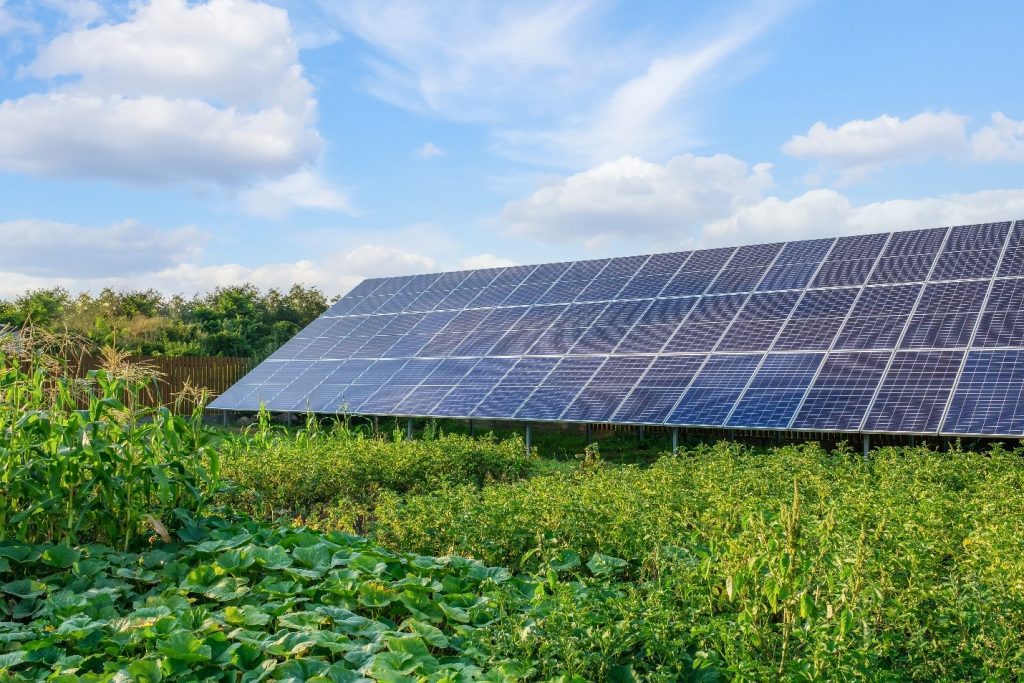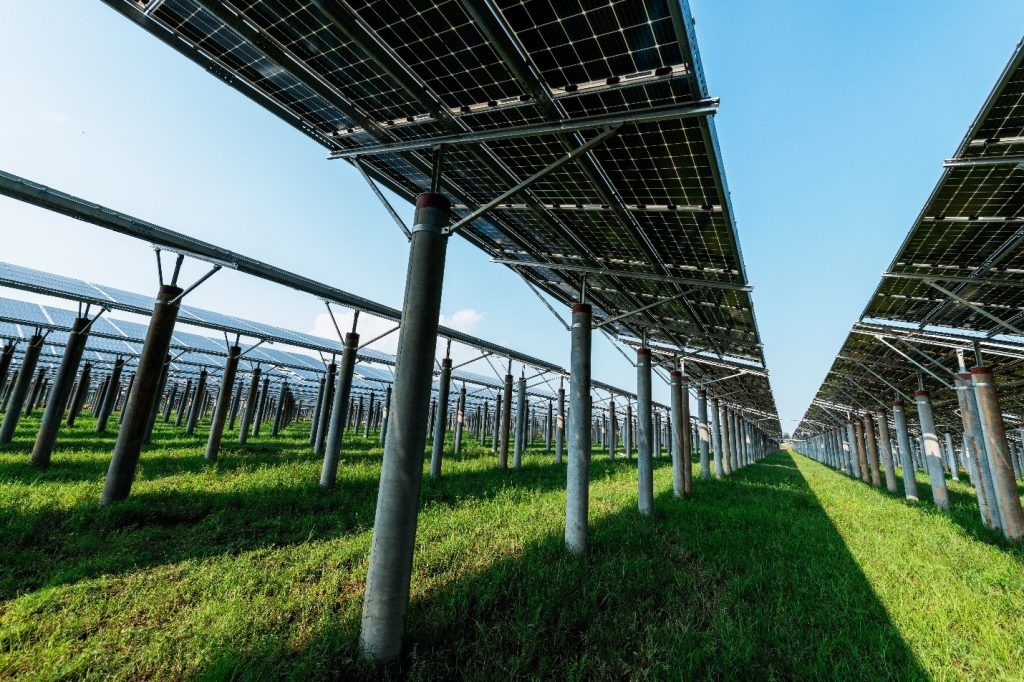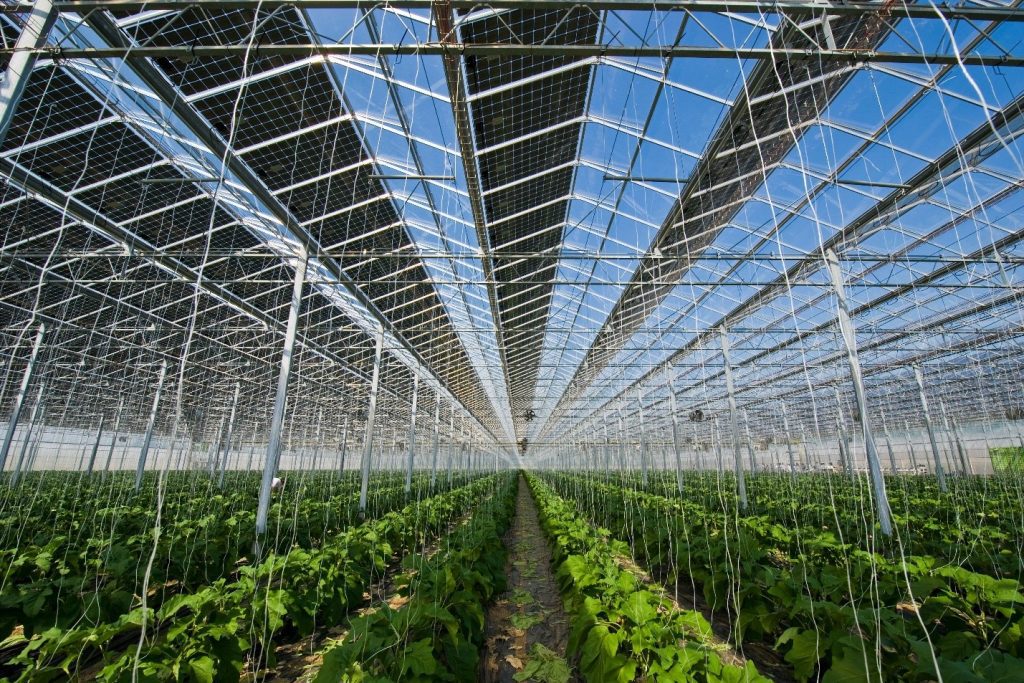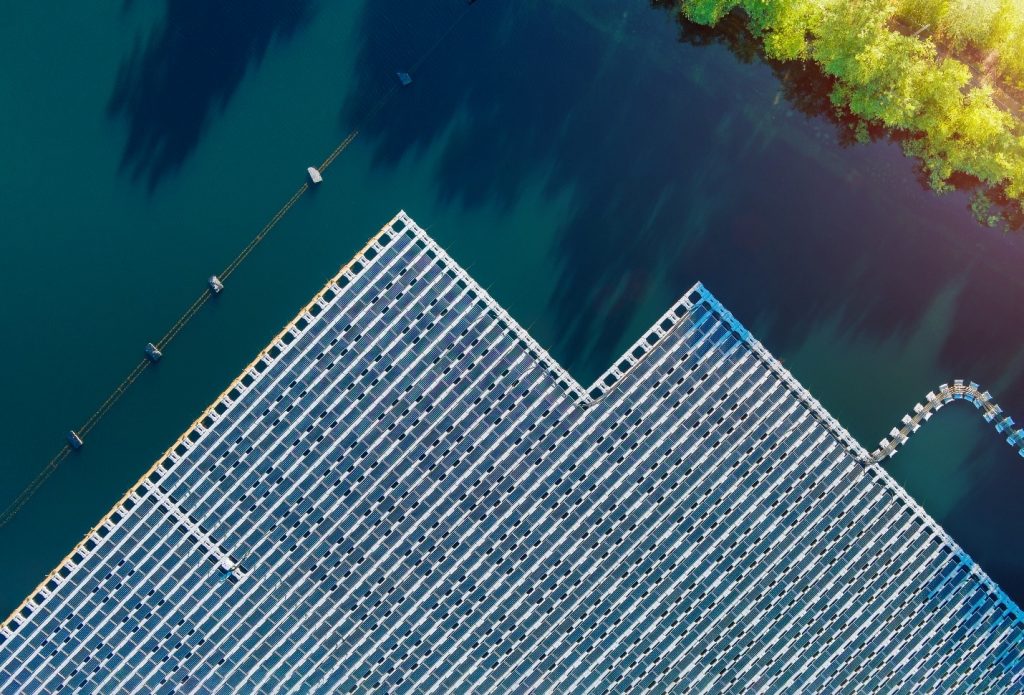Why agrivoltaics is the new industrial farming revolution
Table of Contents
Agriculture and energy are two of the most essential industries in the modern world. The food we eat and the electricity we consume are vital to sustaining life and keeping us moving.
As land availability and climate change become increasingly vital issues, it’s no surprise that effective use of space has become a more hotly debated topic.
Renewable energy sources are increasingly viable ways of addressing our future needs, as we transition away from fossil fuels. According to the US Department of Energy’s ‘Solar Futures’ study, “it is now possible to envision—and chart a path toward—a future where solar provides 40% of the nation’s electricity by 2035.”
But with land at a premium, where will we fit those solar farms?
Enter agrivoltaics. An approach that combines photovoltaic arrays with agricultural activities in a harmonious arrangement. It allows farmers to supplement their agricultural income with energy production, whilst increasing the supply of clean, renewable energy.
We’re going to explore the many ways in which agrivoltaics can peacefully coexist with other farming activities – and the ways in which solar panels can even improve and enhance harvests.
What is agrivoltaics?
Agrivoltaics, also known as agrovoltaics, agrivoltaic farming, agrisolar, or solar sharing, is defined by the US Department of Agriculture as “the use of land for both agriculture and solar photovoltaic energy generation.” By integrating solar photovoltaic (PV) panels with agricultural production, it can prove an effective way of maximizing resource use, and increasing farm productivity.
In a typical agrivoltaics system, solar panels are used to provide shade to the crops or livestock beneath them: While the panels capture sunlight and convert it into electricity, the shade contributes to a more favorable microclimate. The arrays also reduce excessive heat and water evaporation, and protect plants from extreme weather conditions.
There are several types of agrivoltaic systems, each designed for different installation and field conditions.
1) Ground-mounted PV panels
Ground-mounted solar power arrays are the most common agrivoltaic application. It is the simplest approach, with panels connected in long arrays mounted on steel frames. Typical ground clearance ranges from 20 cm (on the low side) to 3 m (on the high side) as the panels tilt to catch the most sunlight.
Assuming there is sufficient spacing between arrays to support plant growth, ground-mounted PV is compatible with several field uses, including livestock grazing (this is also referred to as ‘solar grazing’), horticulture, beekeeping, and biodiversity regeneration.
Ground-mounted PV panels
2) Elevated PV panels
Elevated agrisolar arrays operate in a similar manner to a ground-mounted setup, with the exception that additional height is created between the panels and the ground.
This type of setup is more commonly used in areas with less available land, and it creates enough room for taller plants to grow beneath the panels, such as vines, fruit trees, and cereals. Naturally, installation costs are higher, but elevated panels are becoming increasingly mainstream as farmers look to maximize their productivity.
3) Rooftop installation
This type of solar array is commonly seen on residential and commercial rooftops throughout the world.
In a farm context, rooftop PV can be installed on top of greenhouses or other farm buildings, allowing for horticulture, floriculture and aquaculture beneath. It’s a particularly useful approach when installed to offset – or cover – a greenhouse’s power needs, and also helps protect the building from weather and insect damage.
Solar panels installed on greenhouse roof
4) Floating PV panels
The least common on the list due to its added complexity, agrivoltaics can even be installed on the water in a floating solar panel array. This allows for aquaculture to continue beneath and around the panels, or as a way of maximizing otherwise underused water resources. Additionally, this type of arrangement can reduce water evaporation, slow algae growth and reduce the erosion of embankments.
The many applications of agrivoltaics
As we’ve seen, photovoltaics can be integrated with many different types of agricultural activity. As long as proper consideration is given to crop type, sunlight and moisture needs, and maintenance cycles, agrivoltaic farming can be incorporated into:
- Fields growing crops or tree harvests
- Fields supporting livestock
- Fisheries and bodies of water used for aquaculture
- Greenhouses producing fruit, vegetables, or flowers
What are the benefits of agrivoltaics?
Agrivoltaics is designed with positive outcomes in mind, and it creates a large number of benefits for the farmer:
● An additional source of income
The electricity generated by agrivoltaics can either be used locally or sold into the national grid. Either way, that provides a cost-saving or even profit for the farmer, diversifying farm operations and providing extra protection from crop failures or seasonal variations.
● Increased land use efficiency
Traditionally, solar power generation and farming might have been seen as competitors for land: agrivoltaics instead pitches them as complementary.
In fact, agrivoltaics can increase the efficiency of your land use.
Let’s explore an example. If a farmer uses one field to grow wheat, and another to site a solar array, they will be able to operate both at 100% efficiency. If, on the other hand, both fields are used for a combined wheat and solar agrivoltaics system, with an individual efficiency of 80%, overall production will be at 160% of the original output.
As you can see, this type of dual land use removes the competition between renewable energy projects and food production and delivers maximum overall productivity.
● Extreme weather protection
Extreme weather events are becoming more common, making protection measures important. Helpfully, PV arrays can protect the crops beneath them from hail or storms, and provide cooling shade for grazing animals. These effects increase overall yield and reduce the need to purchase additional weather protection equipment.
● Reduced water evaporation and conserved irrigation water
The shade created by solar panels naturally reduces water evaporation from the soil, helping to reduce your irrigation needs. Depending on the level of shade, you might expect to save 14-29 percent of soil moisture.
● Increased crop yields
For certain types of crops, the shading effect of solar panels can improve quality and yields, by reducing the stress caused by excessive sunlight.
In a series of studies, one particular type of pepper experienced a 150% crop increase, and cherry tomatoes recorded a 90% increased yield. Although, of course, the actual yield impact will vary with air temperature, moisture, location and other factors.
● Utilization of less productive land
Solar power generation is much more adaptable than crops and isn’t affected by soil type, moisture level, or chemical health. That means you can install PV arrays to make the most of otherwise unproductive land.
● Enhanced farm flexibility
By using locally-generated power from a PV array, it becomes possible to site a greenhouse in the most convenient farm location – rather than being restricted by the siting of existing electrical lines.
● Reduced carbon footprint
Some agricultural activities require significant amounts of energy: to power machinery, heating, cooling, or climate control devices. Agrovoltaics can be used as a renewable power source, replacing polluting energy sources and reducing your carbon footprint.
● Protection of biodiversity
Particularly in arid climates, areas sited under solar panels have been found to grow more grass, creating a 90% increase in late-season plant mass. This contributes to a healthier biodiversity, especially when PV arrays are designed to attract butterflies and bees.
The future of agrivoltaics
Clearly, uptake of agrivoltaics is likely to increase, as available land becomes rarer and energy demands increase. That heralds a series of likely evolutions to the technology.
● Computer control
The latest PV arrays can be remotely controlled and tilted in order to maximize their output, year-round. Modern control systems also make it easier to identify maintenance issues, and to keep solar power setups operating at their best.
● Smart microgrids
A microgrid is essentially a local, independent power grid that is able to operate in isolation from the main network.
A smart microgrid takes things to the next level, incorporating intelligent management of electricity resources to optimize resources, maintain required energy storage, and track power generation in real-time.
Agrivoltaics: Emerging or emerged?
Agrivoltaics can bring a lot of advantages to farmers, local communities, and our planet.
Effective implementation requires careful planning, such as following the five Cs. But done right, a harmonious approach to solar power and agriculture can increase farm output, diversify incomes, and provide a new source of green energy.
As research projects continue to help us refine our approaches and develop best practices, agrivoltaics look set to be the future of farming.




